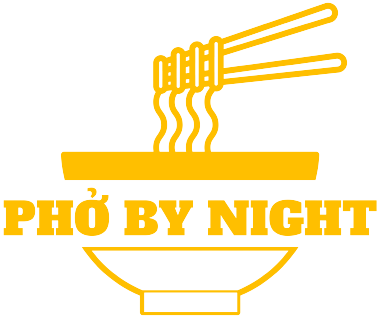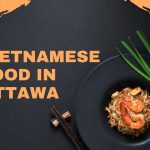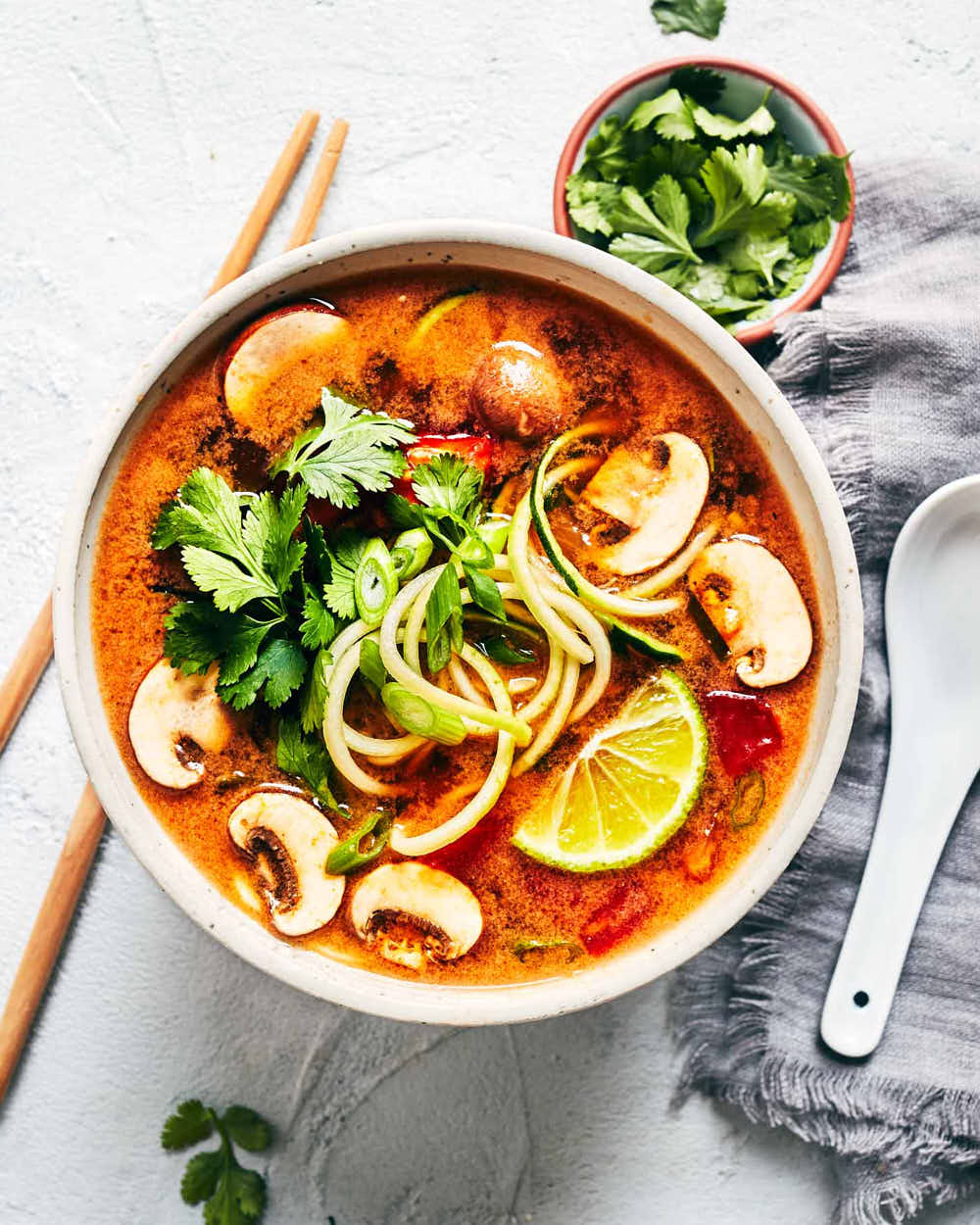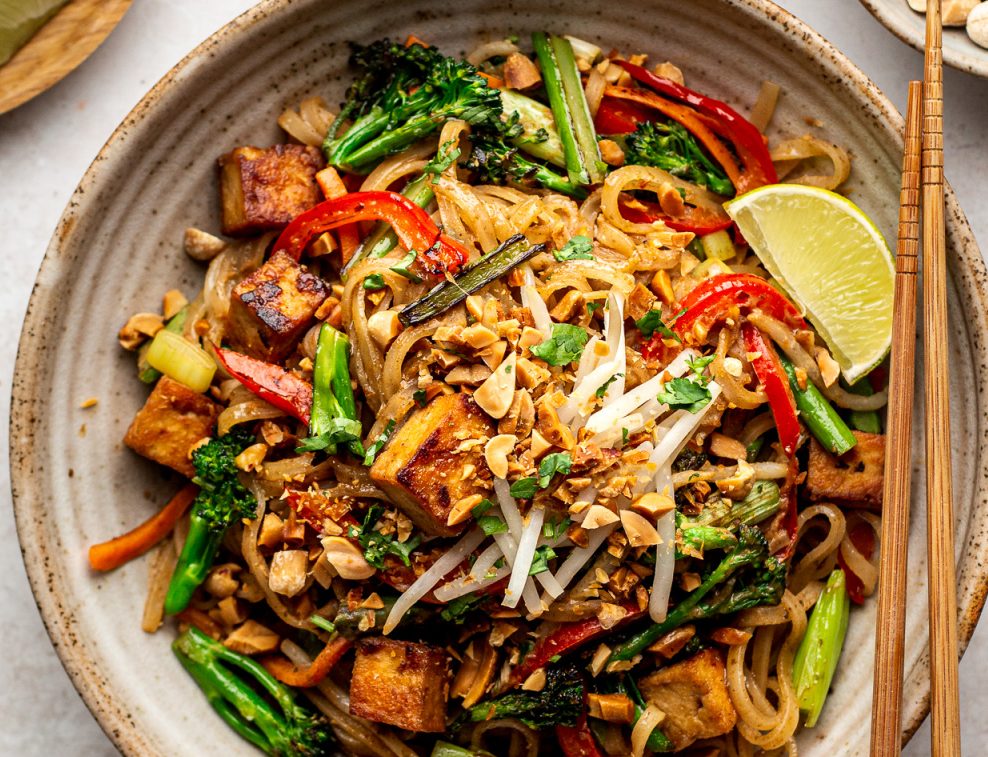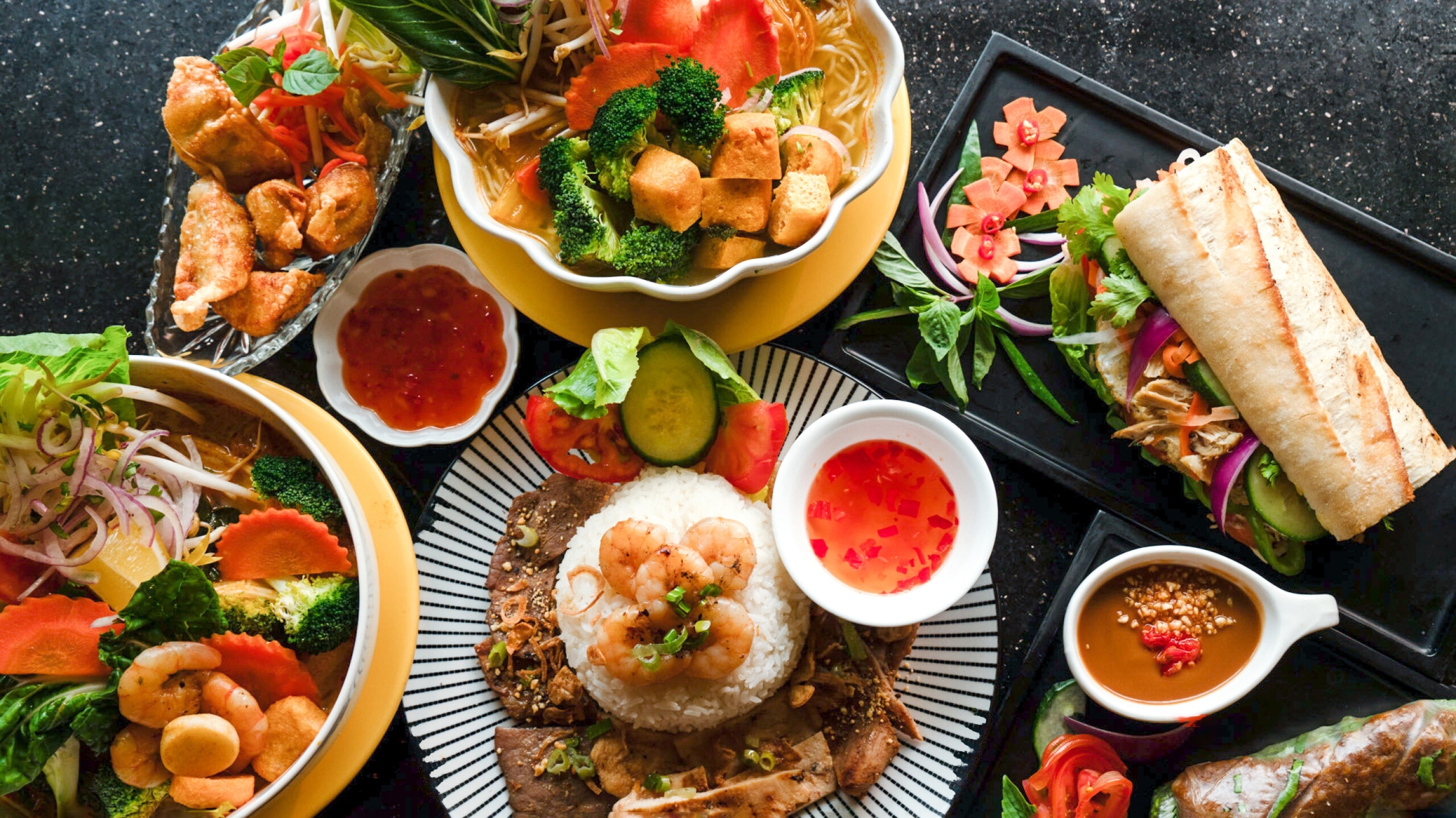
Is Vietnamese Food Gluten Free?
Vietnamese cuisine, a symphony of flavors and textures, often dances on the edge of culinary innovation while deeply rooted in tradition. At the heart of this delightful paradox lies a question of paramount importance for the health-conscious and those with dietary restrictions: Is Vietnamese food gluten-free?
The answer, though nuanced, offers a beacon of hope. With its emphasis on fresh herbs, rice, and vegetables, Vietnamese food inherently leans towards gluten-free options. Yet, it’s the attention to detail, the meticulous selection of sauces, and the transparency in preparation at places like Pho By Night that truly set it apart, ensuring that those seeking gluten-free options are not just accommodated but celebrated.
Embarking on a culinary journey with Vietnamese cuisine offers more than just a meal; it’s an exploration of vibrant, gluten-free possibilities. The challenge, however, lies in navigating the nuances — from soy sauce to certain marinades.
Understanding Vietnamese Cuisine Ingredients
Transitioning from the exploration of common staples and their gluten content, we dive into the heart of Vietnamese cuisine with fish sauce and soy sauce, bold flavors that define authenticity. These condiments are not just ingredients; they are heritage in liquid form.
Embrace the journey further as we unveil the secrets of tamarind and lemongrass, quintessential elements that offer a unique zest, making every dish unmistakably Vietnamese. Their incorporation speaks volumes of a culinary tradition that marries sour, sweet, and tangy, inviting your palate on an exotic adventure. Embrace these flavors, and you embrace the soul of Vietnam.
Common Staples and Their Gluten Content
Venturing deeper into the heart of Vietnamese cuisine reveals its soul, not just through the tantalizing flavors but also through its ingredients. A crucial aspect that often goes unnoticed is the Common Staples and Their Gluten Content.
This isn’t merely about dietary preferences; it’s about embracing a culture that inherently understands the balance of health and taste. Vietnamese staples such as rice noodles and rice paper are gloriously gluten-free, offering a haven for those navigating the complexities of gluten sensitivities or celiac disease. Moreover, this emphasis on rice-based ingredients over wheat not only ensures a lighter, more digestible meal but also introduces an authentic taste of Vietnam right onto your plate.
Fish Sauce and Soy Sauce
As we transition from the bustling marketplace of ingredients to the intricate dance of flavors, let us delve into the heart and soul of Vietnamese cuisine: Fish Sauce and Soy Sauce. These aren’t just condiments; they are the historical essence and lifeline of Vietnamese cooking. Every drop of fish sauce carries with it the briny depths of the sea, a testament to the hardworking fishermen and the age-old traditions of fermentation. It’s this umami-rich liquid that infuses our dishes with complexity and depth, from the beloved Pho to the vibrant salads.
Tamarind and Lemongrass
Having explored the essential role of sauces in bringing Vietnamese dishes to life, let’s now delve into the heart of flavor that sets this cuisine apart. Tamarind and lemongrass are not just ingredients; they are the soul and essence of Vietnamese culinary traditions.
Tamarind, with its bold tartness and hint of sweetness, transforms dishes into a complex symphony of flavors, urging you to explore the depths of Vietnamese gastronomy. Lemongrass, on the other hand, offers a citrusy sharpness that cuts through richness, providing a refreshing balance that is unparalleled.
Navigating Vietnamese Restaurants
Navigating Vietnamese restaurants can be a delightful journey, but it requires strategic questioning and keen observation, especially for those with gluten sensitivities. Questions to ask the staff become your first line of defense, transforming dining from a minefield to a safe haven. Next, identifying gluten in common Vietnamese ingredients is crucial. This knowledge is power, enabling you to decipher menus with the expertise of a seasoned chef. Finally, tips for ordering gluten-free at Vietnamese restaurants are your secret weapon, ensuring that your dining experience is not only safe but also utterly enjoyable.
Questions to Ask the Staff
Now that you’re armed with knowledge about the vibrant ingredients that make Vietnamese cuisine a sensory delight, let’s wade deeper into the experience. Venturing into a Vietnamese restaurant, like ours at Pho By Night in Ottawa, becomes not just about eating, but engaging in a cultural dialogue. Asking the staff questions is not just polite; it’s essential for a truly authentic experience.
What kind of broth do you use in your pho? This isn’t just about preference; it’s about understanding the heart and soul of the dish. Are your sauces homemade, and what ingredients do they contain? This question unveils the dedication of the restaurant to traditional methods and can be crucial for those with dietary restrictions. *Can you recommend a dish that’s a local favorite?
Identifying Gluten in Common Vietnamese Ingredients
Having delved deep into the heart of Vietnamese cuisine’s ingredients, it’s essential to pivot our focus toward a critical aspect that often goes unnoticed but is vital for those with dietary restrictions: Identifying gluten in common Vietnamese ingredients.
Navigating this landscape can seem daunting, but with the right knowledge, you can indulge in the rich tapestry of flavors Vietnam has to offer, worry-free. Gluten hides in plain sight, often in sauces like soy sauce, which is a staple in many dishes. It’s crucial to inquire if a dish uses a gluten-free soy sauce alternative. Similarly, items like hoisin sauce and certain marinated meats can be gluten culprits.
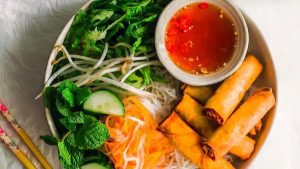
Tips for Ordering Gluten-Free at Vietnamese Restaurants
With a nuanced understanding of Vietnamese cuisine ingredients, one is better equipped to navigate the delightful but often complex menu of a Vietnamese restaurant. When it comes to dining gluten-free, the journey need not be daunting. Vietnamese cuisine, with its emphasis on fresh herbs, meats, and rice-based dishes, organically lends itself to a gluten-free diet. However, vigilance is key.
To ensure a meal that is both delicious and compliant with your dietary needs, always inquire about the use of soy sauce, which traditionally contains wheat, and seek its gluten-free alternatives. Opt for dishes that highlight rice noodles or rice paper, and remember that most broths in Vietnamese cooking are naturally gluten-free, making the beloved Pho a safe choice.
Preparing Gluten-Free Vietnamese Food at Home
Embracing the art of preparing Gluten-Free Vietnamese Food at Home not only opens a door to a world of vibrant flavors but also ensures that everyone, regardless of dietary restrictions, can enjoy these beloved dishes.
By adapting traditional recipes for gluten sensitivity, we transform Pho, Banh Mi, and Spring Rolls into safe, delectable options without sacrificing their authenticity. It’s a journey of reimagining culinary traditions, where safe preparation practices to avoid cross-contamination are paramount. Your kitchen can become a haven for those seeking the comfort of Vietnamese cuisine without worry.
Gluten-Free Recipes for Popular Dishes
Navigating Vietnamese restaurants with a keen eye for gluten-free options opens up a world of culinary adventure, but nothing compares to the joy and satisfaction of mastering Gluten-Free Recipes for Popular Dishes at home.
Embrace the art of transforming traditional Vietnamese favorites into gluten-free marvels, ensuring that everyone, regardless of dietary restrictions, can savor the rich tapestry of flavors that Vietnamese cuisine has to offer. From the delicate balance of spices in a bowl of Pho to the crisp freshness of Goi Cuon, these dishes retain their authentic essence even when adapted to be gluten-free. By choosing to prepare these meals at home, you not only guarantee a safe dining experience but also deepen your connection to the intricate and vibrant culture of Vietnam.
Adapting Traditional Recipes for Gluten Sensitivity
While dining out can offer a delightful journey through Vietnamese cuisine, transitioning the joy of these flavors to your home kitchen, especially for those with gluten sensitivity, requires both creativity and care. Adapting traditional recipes for gluten sensitivity is not merely an act of substitution; it’s a celebration of inclusivity, ensuring everyone can revel in the rich tapestry of Vietnamese culinary delights without compromise.
By choosing gluten-free alternatives such as tamari sauce in place of traditional soy sauce, or by crafting your rice noodles rather than relying on store-bought options that may contain hidden gluten, you’re not just cooking; you’re embarking on a culinary adventure that respects traditional while embracing modern dietary needs.
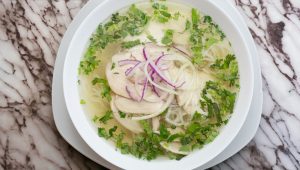
Safe Preparation Practices to Avoid Cross-Contamination
Transitioning from the exploration of navigating Vietnamese restaurants, we now delve into the sanctity of our home kitchens, where the art of crafting gluten-free Vietnamese delicacies assumes a new dimension. One pivotal aspect of this culinary journey is safe preparation practices to avoid cross-contamination, a concern that cannot be understated for those with gluten sensitivities.
Ensuring your kitchen is a haven for gluten-free cooking involves more than just selecting the right ingredients; it’s about creating an environment where gluten has no dominion. The first step is to designate specific cooking utensils and appliances solely for gluten-free use. This act alone significantly reduces the risk of cross-contamination, providing peace of mind for those we cook for.
Moreover, adopting rigorous cleaning protocols before and after cooking cannot be overlooked.
Conclusion
Exploring the vibrant flavors of Vietnamese cuisine opens up a world of culinary experiences, especially for those seeking gluten-free options. By understanding the basic ingredients common in Vietnamese food, navigating restaurant menus with confidence, and experimenting with cooking these dishes at home, one can enjoy the rich, gluten-free possibilities this cuisine offers. The journey into Vietnamese cooking is not just about maintaining a gluten-free diet; it’s about embracing a culture that celebrates fresh, flavorful, and health-conscious meals.
Embrace the adventure that Vietnamese cuisine presents. With a little diligence and creativity, you can relish in the diverse, gluten-free dishes that are both nourishing and tantalizing to the palate. Let the exploration of Vietnamese cuisine inspire you to think differently about gluten-free dining, turning it from a dietary restriction into an opportunity for culinary discovery and delight.

